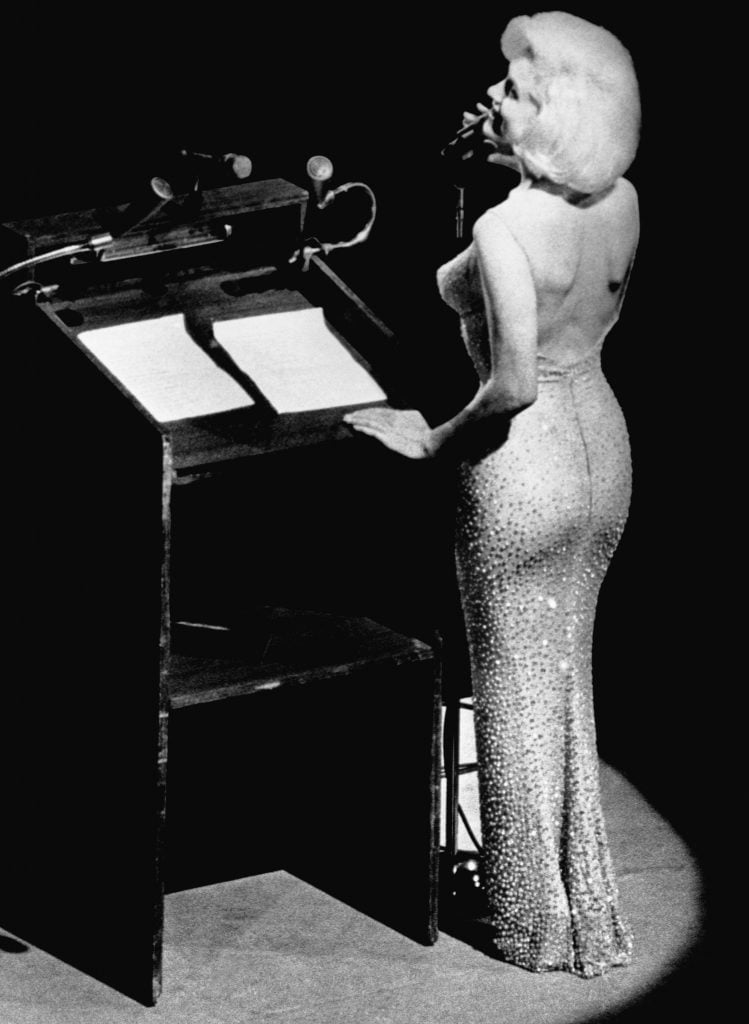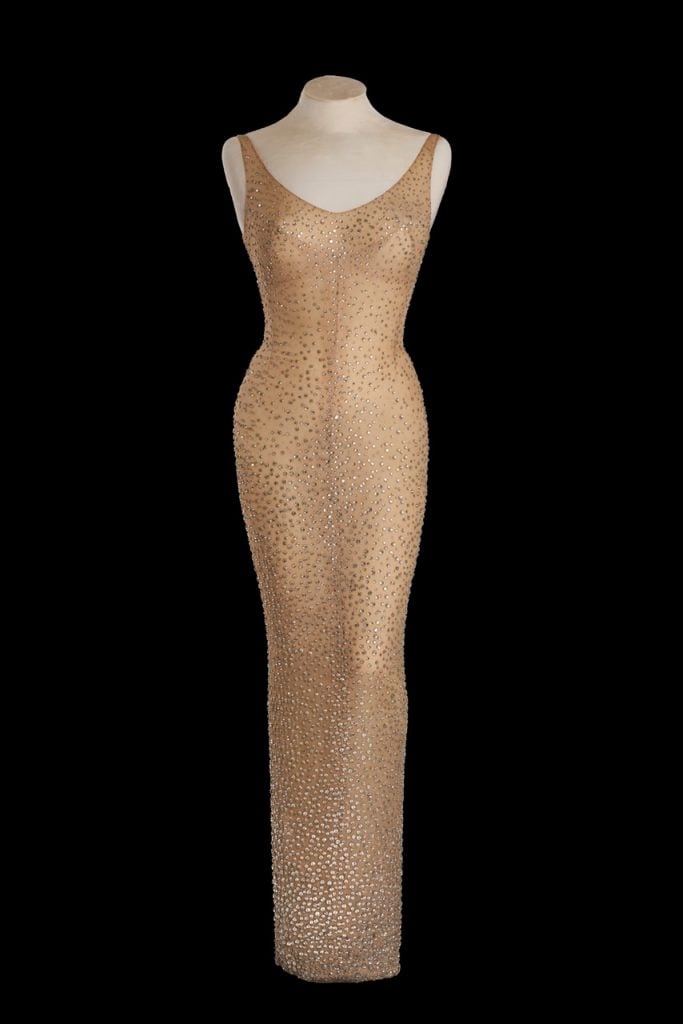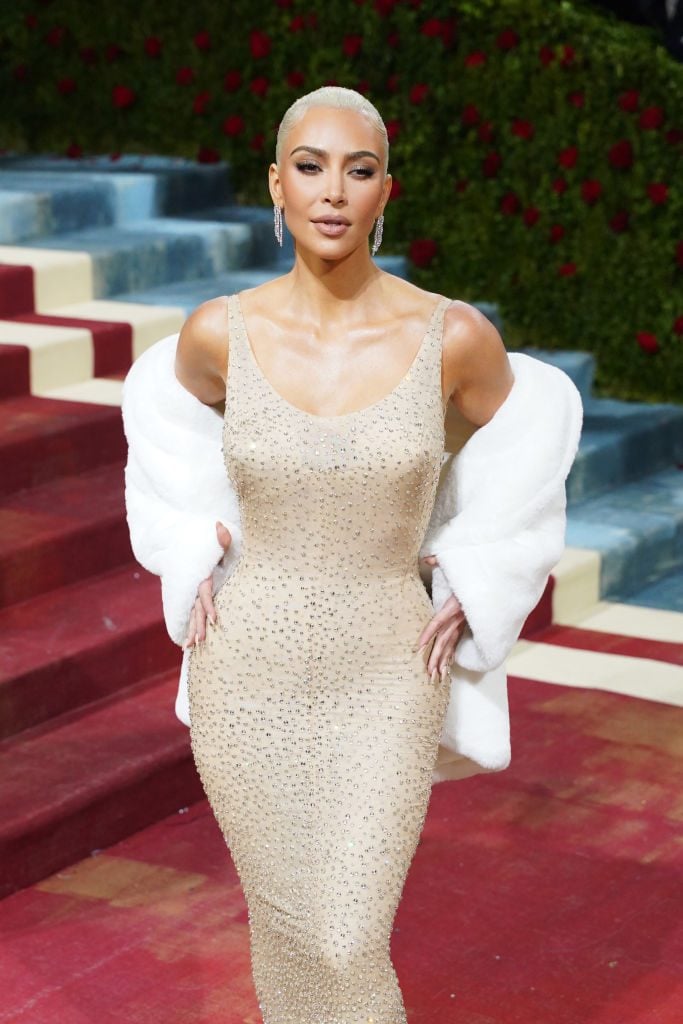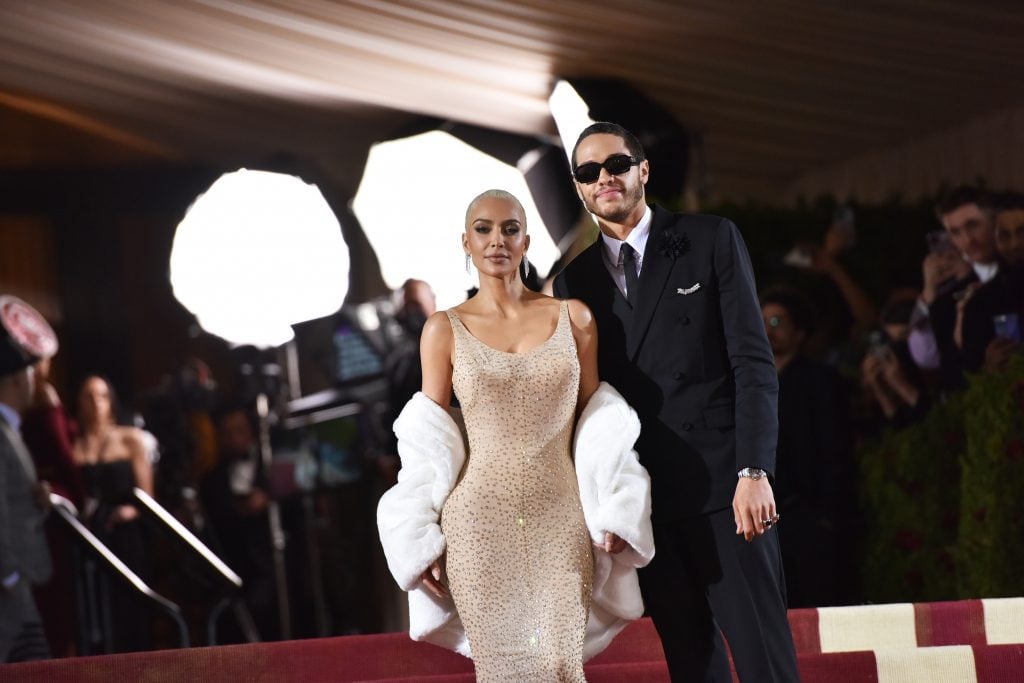Preservationists posted photos on social media that appeared to show damage to the iconic dress, with missing crystals and stretched fabric, compared to a photograph taken before Kardashian wore it.
Kim Kardashian and Pete Davidson attended the 2022 Met Gala. She controversially wore Marilyn Monroe’s “Happy Birthday, Mr. President” dress—the most expensive dress ever sold at auction. Photo by Sean Zanni/Patrick McMullan.
The fallout over Kim Kardashian’s decision to wear a historic Marilyn Monroe dress to this year’s Costume Institute Gala at New York’s Metropolitan Museum of Art has been so intense that the International Council of Museums (ICOM) is launching a new clothing preservation committee in response to the controversy.
“The media frenzy following the Met Gala highlighted the fragility of textile and clothing heritage in the face of the responsibility of museums in charge of this type of collection,” said Corinne Thépaut-Cabasset, chair of ICOM’s International Committee for Museums and Collections of Costume, Fashion and Textiles (ICOM Costume), in a statement provided to Artnet News.
The organization is now forming a working group that will help update its code of conduct for museum members, as well as the ICOM Costume guidelines.
Monroe famously wore the rhinestone-covered dress, which created the illusion of nudity, to a fundraising event at New York’s Madison Square Garden in 1962, singing a sultry version of “Happy Birthday” to then-President John F. Kennedy.

Actress Marilyn Monroe sings for President John F. Kennedy at Madison Square Garden on his 45th birthday, on May 20, 1962. Photo: Bettman via Getty Images.
It originally cost $1,440, but has since become the most expensive dress in the world, selling for more than $1.2 million dollars in 1999 in a sale of Monroe’s estate at Christie’s New York. It later sold for $4.8 million at Julien’s Auctions in Los Angeles, in 2016.
When Kardashian recently wore it for the red carpet moment, she and the dress’s current owner, museum franchise Ripley’s Believe It Or Not!, attracted widespread criticism from fashion historians and conservators—including ICOM—for potentially endangering the fragile garment.
“Historic garments should not be worn by anybody, public or private figures,” ICOM said in a statement. “Prevention is better than cure. Wrong treatment will destroy an object forever.”
But Ripley’s is not an accredited museum, and is therefore not bound by ICOM’s standards—even if they are made more strict by the new working group.

Marilyn Monroe’s “Happy Birthday Mr. President” dress. Photo courtesy of Julien’s Auctions.
“There is no disputing the fragility of the dress and there was calculated risk associated with wearing it,” Ripley’s admitted. “Our mission is to both entertain and educate visitors and fans, and sparking conversations like the discourse around Marilyn Monroe’s dress does just that. No matter which side of the debate you are on, the historical importance of the dress has not been negated, but rather highlighted.”
The dress is especially precious because the material it is made of is marquisette, also known as French soufflé fabric, which is so flammable that it has since been outlawed—and so cannot be replaced.
Ripley’s normally stores the dress in a darkened vault at 68 degrees Fahrenheit, with carefully controlled humidity level of 40 to 50 percent—conditions that could not be replicated at the live event.
Kardashian did take numerous measures to protect the garment during the gala, including eschewing body makeup and losing 16 pounds to fit into the petite dress.
In addition to two pre-gala fittings, Kardashian only wore the outfit for a matter of minutes. She set up a special dressing room just beyond the red carpet, changing with the assistance of a Ripley’s conservator before gingerly climbing the Met stairs. Once the reality star entered the museum, she changed into a replica down for the party itself.
But even touching vintage garments can damage them, preservationist say.
Earlier this week, the Marilyn Monroe Collection Instagram account posted photos that appeared to show damage to the dress, with missing crystals and stretched fabric compared to a photograph taken before Kardashian wore it.
Those condition issues were evident even before the Met Gala outing, according to Ripley’s. The company cited a 2017 condition report that found “a number of the seams are pulled and worn,” and “there is puckering at the back by the hooks and eyes,” among other damage.
“The dress was [returned] in the same condition it started in,” Ripley’s vice president of publishing and licensing, Amanda Joiner, told the New York Post. (It is scheduled to be on view at Ripley’s Believe It or Not Hollywood through the fall.)
Such reassurances seem unlikely to quiet those who insist there is no appropriate instance or safe way to don a historic garment like this.

Not quite Gilded Age, but certainly gilded, Kim Kardashian attended the 2022 Met Gala wearing Marilyn Monroe’s “Happy Birthday, Mr. President” dress—the most expensive dress ever sold at auction. Photo: Sean Zanni/Patrick McMullan via Getty Images.
Bob Mackie, who did the initial sketch for the dress while working as an assistant for designer Jean Louis, also disapproved of Ripley’s decision to let Kardashian borrow the garment.
“I thought it was a big mistake,” he told Entertainment Weekly. “[Marilyn] was a goddess. A crazy goddess, but a goddess. She was just fabulous. Nobody photographs like that. And it was done for her. It was designed for her. Nobody else should be seen in that dress.”
See the full statement from Thépaut-Cabasset about the new working group below.
The media frenzy following the Met Gala highlighted the fragility of textile and clothing heritage in the face of the responsibility of museums in charge of this type of collection.
It is in this context and under pressure from museum professionals specializing in the conservation of fashion and textile collections that the International Committee of ICOM Costume decided, on the proposal of its Bureau, to set up a working group to integrate more voices and open a discussion on the updating of its code of conduct established and published in 1986.
This group will be composed of members of the ICOM Costume Committee, members of its Bureau, and members of other ICOM committees: ICOM South Africa, ICOM Canada, ICOM Cameroon, ICOM CC (conservation), ICME (committee for ethnographic museums and collections) among others.
The work of reflection will be carried out during online thematic meetings with experts inside and outside of ICOM to come up with a new proposal for the drafting of ICOM Costume guidelines, which will be posted on its website: costume.mini.icom.museum. The ICOM Costume Guidelines Working Group wishes to work in full transparency and share its expertise with the international museum community through ICOM.
